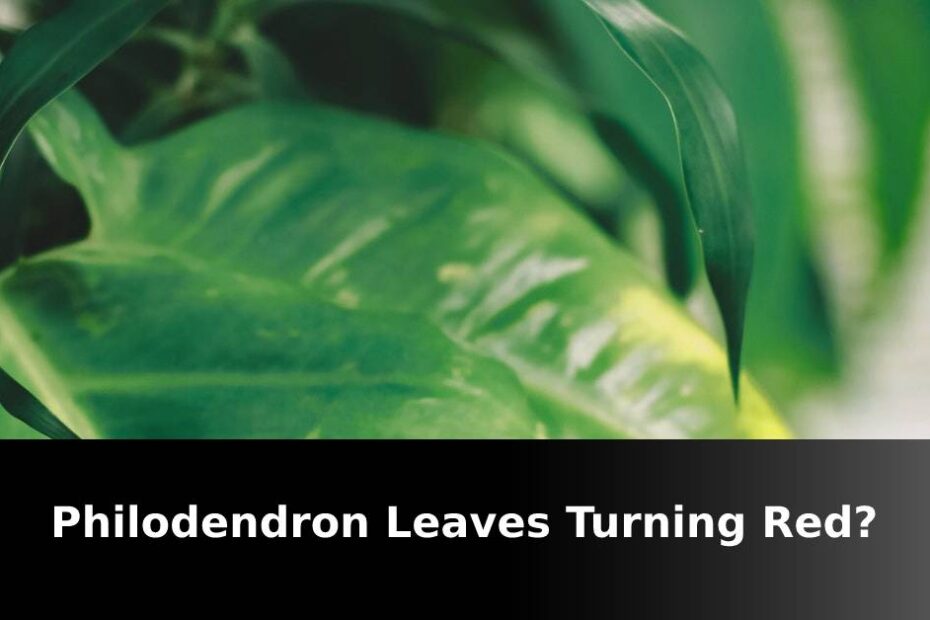Philodendron plants of all kinds of varieties are not only known for their gorgeous green leaves, but they are also quite expensive compared to most plants.
It’s understandable that at any sign of distress in your plant that you would want to take action to see what’s going on and in the case of your Philodendron leaves turning red, most of the time you should.
Luckily most of the time the causes for this issue are fairly easy to identify as the most common causes for Philodendron leaves turning red include too much sun, cold weather, repot stress and poor drainage.
Therefore, if your Philodendron has been fine all along and then during certain seasons you notice the plant has been looking much different, you can really narrow down what’s causing the redness.
So let’s take a look at each of these potential causes and see what you can do about it.
Too much Sun
Philodendron plants grow and look their best when grown in medium light such as bright indirect light or even low light conditions at times.
What they do not like is intense full sun for hours on end as this can not only cause burned leaves, but it can seriously dry out the plant and create physical stress on the plant.
Usually you will notice the redness first before the Philodendron leaves turn brown and eventually fall off from the damage.
A lot of different types of plants will turn a different color when dealing with physical stress and a lot of the time the color will actually be red.
This would also be the case for Philodendrons is many cases and is more common during the warmer seasons such as spring and summer where light can be more intense and when temperatures are at their warmest.
- Solution
If you’re growing outdoors then it’s likely that your Philodendron is not getting enough shade or is just in a bad location. Try placing the plant under some shade like a porch, covered balcony or under a tree.
If you’re growing indoors then make sure your plant is at least a foot or 2 away from windows which will prevent direct sun exposure on the plant, but at the same time allow for plenty of indirect light.
Cold Temperatures
If you notice your Philodendron leaves are only turning red in the winter or when temperatures are at their lowest, then the most likely cause is just cold temperature.
Philodendrons have what is known as Anthocyanins in them which produce different color pigmentations to protect the plant under stress or for other reasons.
In this case, cold temperature can cause these Anthocyanins to activate, thus you will notice red pigmentation in the leaves.
- Solution
Philodendrons should be grown in warm temperatures so if you’re growing outdoors then you should look into either bringing the plant inside for the time being or use a mini greenhouse to keep the plant protected from frost.
Overall your plant will be fine as long as corrective action is taken before the plant get’s too far gone just like with too much direct sun.
Repot Stress
As mentioned before, when plants get physically stressed they can respond in a colorful way.
In this case when repotting, you’re potentially bringing your Philodendron into a new environment whether that be different soil, a different kind of container or a different growing area.
Any of these things or a combination could cause what is known as transplant stress or repot stress in your Philodendron and if you see red leaves shortly after then this is most likely the culprit.
- Solution
There isn’t anything you should really do at this point, but just wait and let your plant get acclimated to the new conditions.
With that said, to reduce the chances of this happening you should only go up one pot size at a time when transplanting as a too large container can cause not only this but more problems down the road such as drainage issues.
Poor Drainage
Philodendron plants like to have loose well draining soil that either can completely dry out or be slightly moist at all times.
If you use the wrong type of soil or have it compacted too tight then you can run into issues with drainage by either preventing the roots from receiving water or by damaging the roots themselves by not letting them get oxygen.
In either case the result can be red leaves at best or a dying plant at worst.
Poor drainage is also a major cause for yellow leaves on a Philodendron as well, especially when combined with overwatering.
If you think none of the other reasons listed above are the reason then this will likely be the cause of the issue.
- Solution
Use well draining soil such as Peat Moss or Sphagnum Moss or other materials that can aid with water drainage.
Make sure you have a drainage hole in your container to allow water to flow freely after each watering.
Lastly don’t pack the soil in too tight as this can crush the roots or prevent them from receiving much needed air.
Conclusion
There are likely some other causes for red leaves in Philodendron’s, but in my experience these are the most common causes of this problem and should be your first checks when trying to figure out why the plant has suddenly started to look a bit different.
